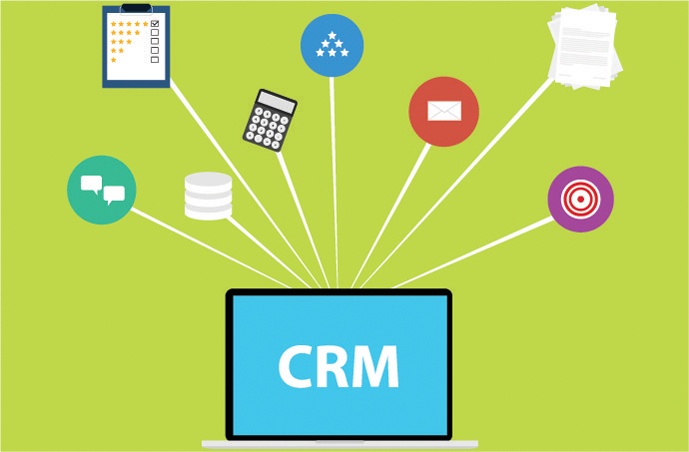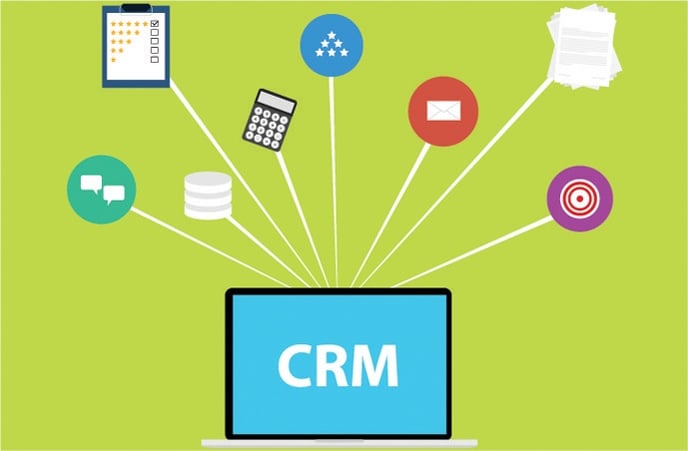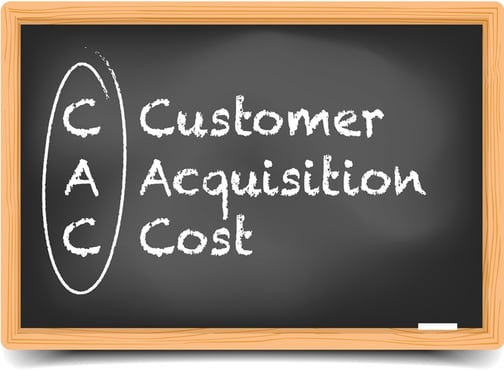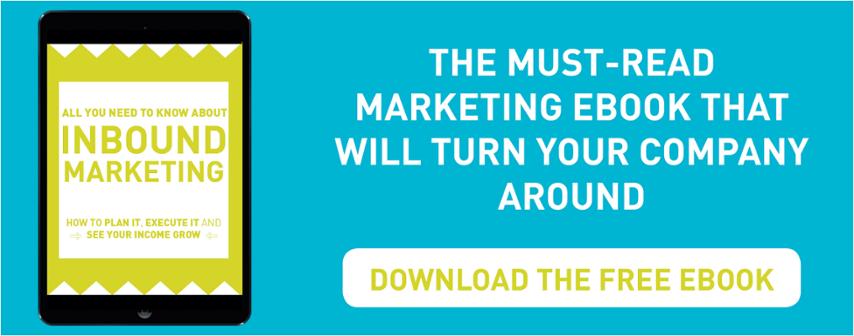How to Create an Effective CRM Strategy That Will Actually Work


Most companies have a customer relationship management (CRM) system in place, but they are really struggling to keep it updated and using it effectively to work for them. I hear all too often from sales and marketing managers how their struggle with getting people that are out in the field to effectively update it, and lamenting the fact that for this reason their CRM is, more often than not, not performing as well as it should. And this can affect their lead-to-customer conversion rate, as well as compromise their whole sales and marketing strategy, especially if they are taking an inbound approach.
Why is a CRM strategy important?
- Make decisions based on leads' pipeline.
- See the past history and interactions of a lead or old customer you are trying to renew in order to better tailor the sales process to them.
- Gain a better understanding of who your best customers are. Differentiate between the customers who provide the highest profit margins and those that simply bring you the most revenue. You could use that information to provide them a better type or tier of customer service for better customers, as Inc. explains.
- Spot potential high-value customers so that you can make the most of your sales opportunities with them and lower the cost of selling to others that are not engaging as much.
The importance of the CRM I think is easily understood by most companies, but even if you have the most advanced system in the world, if you can't get your team onboard and using it every day, it will be all for nothing.
Here is how to have an effective CRM strategy in place to make sure it really works for your company.
Choose the right CRM
Choosing the right CRM is half the battle. There are a few things you should consider to make sure your CRM is optimised to your way of working and will encourage people to use it more.
Mobile
According to a study by Software Advice, 82 percent of those who use a mobile CRM claimed it has improved the quality of their data. The most-used mobile CRM applications include sales content management, review/input customer information and sales reporting and analytics, as pointed out by Software Advice.
As explained before, companies that use CRM software leverage the data to change the way they work and make decisions, and mobile CRM boosts this ability by allowing workers to access the information remotely. This means employees can ponder work-related decisions at any time of day and keep the information updated on the go.
Automated
There is nothing worse than having to insert every last bit of information about a contact into the CRM all the time, and lose precious time that you could be investing in generating more sales. That is why you should look for a CRM that allows you to automate certain processes or information.
For example, you can create a process so that whenever a prospect performs a certain action on your website or with your emails, you immediately set a task to one of your sales reps to call them to see if you can be of any further help, or that changes the contact's lead status and qualifies them further. Or, for instance, you can create a sequence of automated follow-up emails for specific contacts that are triggered from the sales rep's email, so that they don't have to do manual follow-ups anymore.
If you integrate your CRM with your website data, you can also register a contact's web actions. HubSpot does that really efficiently, as it puts together your analytics and lead generation data with your CRM, updating each contact's information with the actions that they perform on your website.
Register calls
Some CRMs allow you to record phone calls directly into the system, so that you don't have to spend time typing in your phone conversations with every contact, but you can just have the recording on there. In this way, if you ever need to go back and check what you said on a specific date, you can just listen to the conversation again.
Simple to use
There is nothing that will put your employees more off from using it than having a very complicated CRM system that will take them ages to learn and use.
"Make sure that the system is simple to learn for new users, and that your users can easily teach themselves as they work," advises Rafi Sweary, president, WalkMe on CIO. Similarly, you should "make sure employees have the opportunity to tell you what features do and do not make sense," says Aron Susman, cofounder, The Square Foo. In this way, they will not only feel more involved in the decision, but you can also make sure the CRM will work for their way of working and it will be easier for them to learn it.
Have everything in one place
I am sure we have all been, through the course of our professional lives (or maybe even now!), a stage in which we had to juggle a dozen different excel spreadsheets, a database software and a few other bits and bobs, and the information is scattered all over the place that it becomes almost impossible to manage it or find the right piece of information at the right time.
"By freeing the data from silos and centralizing the information, all stakeholders can find the customer information they need, where and when they need it." says Lou Guercia, the CEO of Scribe Software on CIO.
Additionally, having to insert information multiple time will put people off immediately. If you cannot find a way to use one piece of software for all, at least check whether it all integrates together or if there is an API that allows you or a developer to do a custom integration for you.
Training
When implementing a new CRM system, you should always allow for enough time and budget for effective, in-depth training. Unfortunately, as CRM search explains, there's a tendency to treat user training as an afterthought or assume that a few hours of training that shows your users which keys to press is enough. You should allow for thorough training on all aspects of the system that users will actually use, and this goes well beyond a couple of hours showing which information goes in which place on the screen.
During the training, show them the specific benefits it will bring them, how they can use it to optimise their work and how it will ultimately impact the company as a whole. In this way, they will be more motivated to learn and use it effectively.
Set up rewards
Getting marketers, sales staff and customer support representatives to actually effectively use a CRM system is often a major cultural challenge for the company. CRM search suggests to use a carrot-and-stick approach with incentives for people who adopt the entire system, followed, after a suitable period of time, by increasing sanctions against those who are not willing to get with the program. Badges, leaderboards, rewards and public recognition are just some ideas for those little incentives.
Continue tweaking it
The job of implementing a CRM doesn’t end when your system goes live, as CRM search explains. In fact, the period after you start using it is one of the most important times in terms of achieving sustained productivity. You can only figure out what you really need from it when teams and individuals start to actually use it, so you might need to continue adding and removing features in order to get it exctly right.
Ask for feedback and continue tweaking the system based on what your team would find more beneficial and that would work best with their routine. It’s a truism in CRM that productivity will actually drop right after the systems goes live, as CRM search explains. You need to treat this as a shakedown period and be actively listening to your users so you can respond quickly and effectively.
Identify superusers
In the implementation and utilisation of the CRM, identify the people who are (or should be) using the system the most, and ensure they are highly involved with the development of the system and get extra special training. In this way, they can feel more part of it and become promoters of the system also to the other users.
Keep it simple
"Sales people are busy," explains Andy Cronk, development director, Aspire Technologies Limited, a Microsoft Dynamics CRM solution provider. "So to ensure your sales users can quickly enter data about a lead/opportunity, make sure there are no more than five fields to complete."
Also, don't over-design or add too many features to it that users have to learn on top of everything else. Simple and straight-forward is better.
Make sure the teams communicate
I cannot stress enough the importance of good communication inside a company between the different teams. Sales and marketing are the two areas that should especially be working together when it comes to CRM.
The best way to bring them together is by making them focused on the same revenue goals and getting them to collaborate in achieving them. By getting them to agree on certain lead qualification criteria and information that the marketing team needs to gather about the contacts, the marketing team will generate more highly-qualified leads that the sales team will then be able to close more easily. All of this information can be inserted and communicated effectively through the help of the CRM, but if there isn't that agreement between the teams in place, it won't work.
Conclusion
The choice and the way you will use your CRM is completely down to your industry, your company and the way of working of your employees. The key thing is to not make it a top-level management decision, but get as many people involved in it as possible and let the users decide a system that will work best for their way of working.
More from CRM & Automation

Marketing for solicitors:15 strategies and ideas to grow
As a solicitors' firm, you can probably resonate with this scenario: you’re rushed off your feet, with work coming out of your...
Customer Acquisition Cost: The Secret To Your B2B Success
Stop spending, start investing. A new approach to customer acquisition that will show you how to grow your business by...







